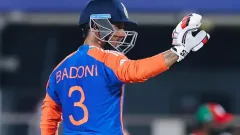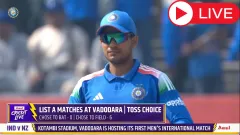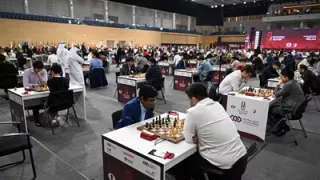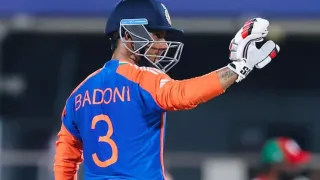Follow-on rule in cricket: The only Test match between the Indian women's cricket team and South Africa cricket team (IND W vs SA W) is being played at the M Chindabaram Stadium in Chennai. In this Test match, Indian women's team captain Harmanpreet Kaur won the toss and decided to bat first. Batting first, the Indian team declared the first innings at 603/6. In response, the South African team could score only 266 runs in the first innings. Then India gave follow-on to South Africa. So let's know what is the follow-on rule in Test cricket
What is the follow-on rule in test cricket? All you need to know
Follow on is an interesting rule in Test cricket. The rule is a little complicated to understand. If a team bats first and finishes second with a total that is at least 200 runs less than the team batting first, they may be asked to follow on. That is, they will be asked to bat again and try to overcome the lead. If they fail to do so then the opponent wins the game by an innings. And if they do manage to overcome the lead, the opponent must score one more run which is whatever the other team scored.
Example of Follow-On Rule - If the team batting first (Team A) has a score of 600 runs. The team batting second (Team B) scored 300 runs in their first innings. Now Team B is 300 runs behind Team A. In this case Team A may follow on and ask Team B to bat again. Now their task will be to score at least 300 runs. Now if they score 250 in their second innings, then team A will win by an innings and 50 runs. But if they manage to score something above 300, say 400, then team A will have to chase a target of 100 runs to win the match. In this case, team A will win by number of wickets.

Image Source: X
Advantages of following on in Test cricket
You have to dominate and control the game. If you win by an innings in the end, the opponent has already lost the next game mentally. Even if the opponent manages to overcome the lead, in most cases you will only get a target of under 100 to win the game.
Disadvantages of following on in Test cricket
Your bowlers will have to bowl for 2 consecutive innings which can be very tiring. If the opponent manages to overcome the lead and give you a healthy target which you are unable to chase, they take the upper hand going into the next game.
Also Read: Most wickets in men's World Cups ODI and T20 Combined
Frequently Asked Questions (FAQ)
How many runs are needed to avoid follow on rules in Test cricket?▼
The team batting second needs to have a deficit less than 200 runs compared to the first innings score of the team batting first in order to avoid follow on rules in Test cricket.
Who decides to enforce the follow on rule for a team?▼
The captain of the team batting first takes the decision of whether to enforce the follow on rule after considering various factors such as weather conditions, time left in the match, condition and fitness of the bowlers etc.


Disclaimer
Possible11 is a sports news and analysis platform designed purely for entertainment and educational purposes. All match previews, player insights, and team analyses are based on publicly available information and expert opinions. We do not promote or support betting, gambling, or real-money gaming in any form. Users are encouraged to enjoy our content responsibly and use it for informational purposes only.































Give Your Feedback